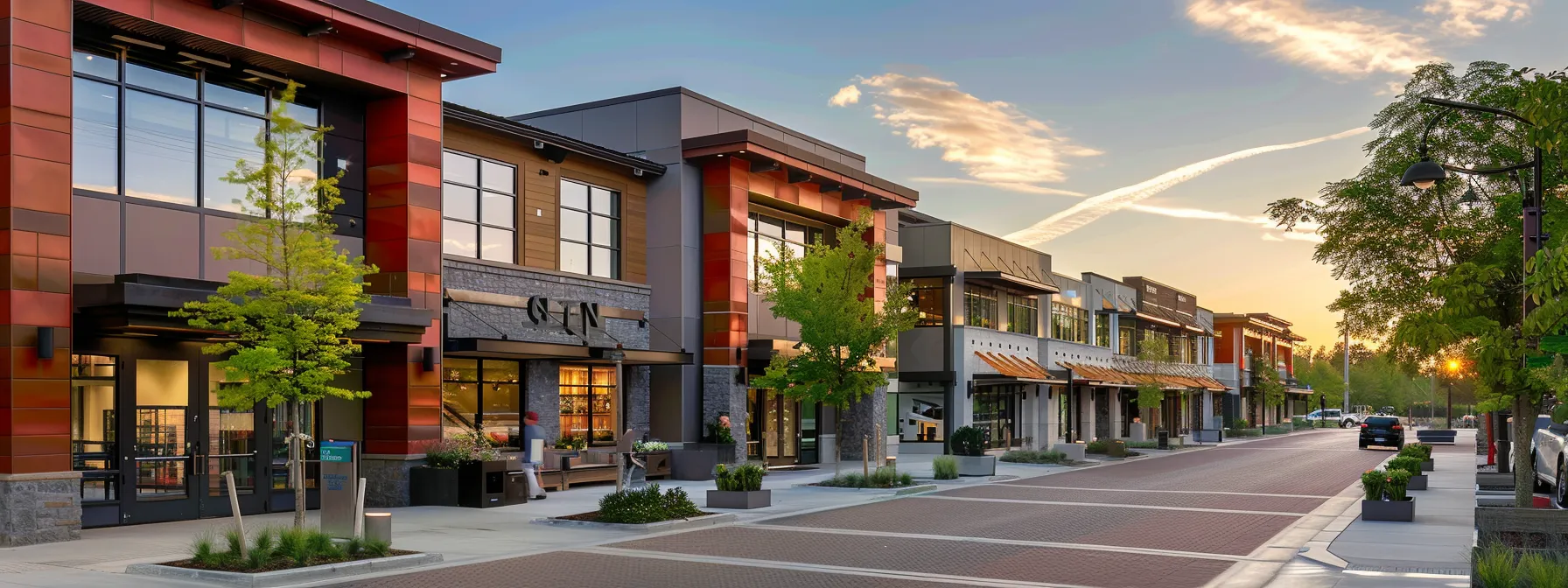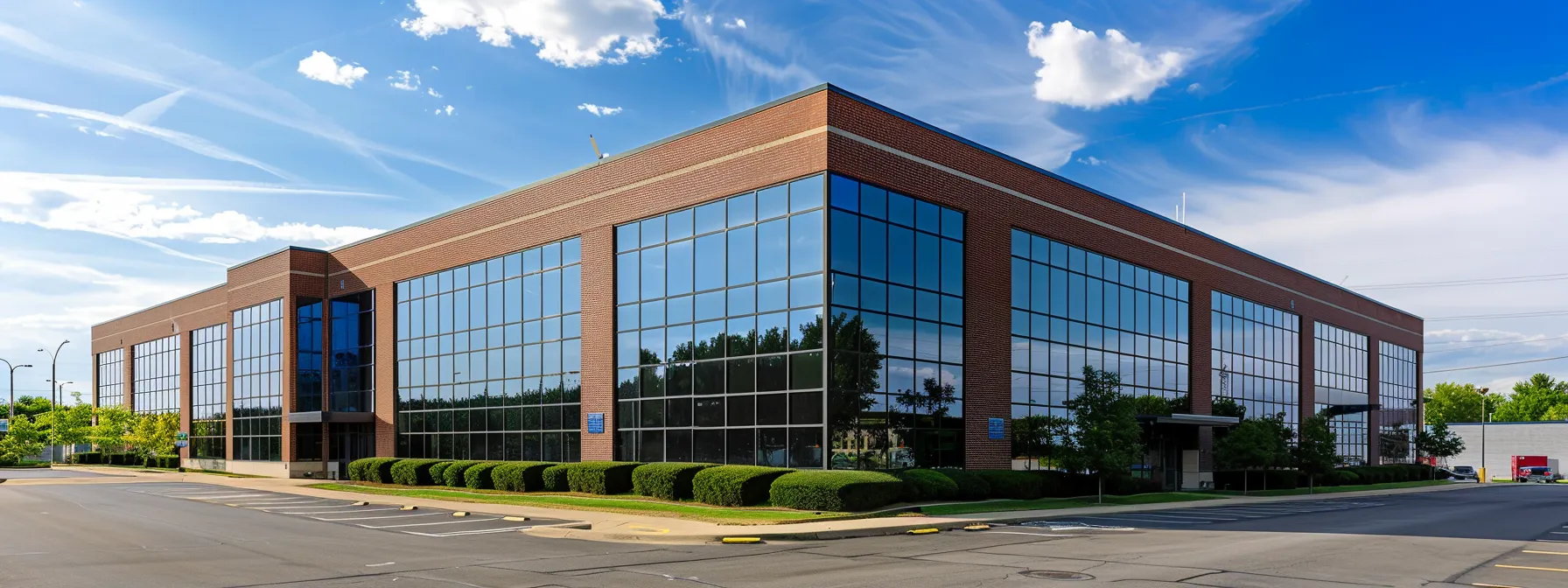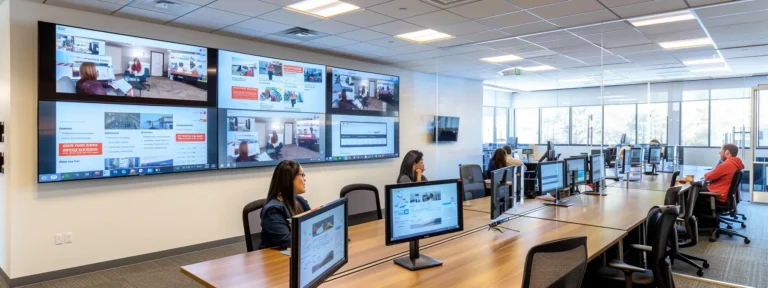Heads Up: When you purchase through links on our site, we may earn an affiliate commission at no cost to you.
If you’re looking to build lasting wealth, generate consistent cash flow, and tap into larger-scale returns, learning how to invest in commercial real estate might be your next smartest move. It’s not just about owning a building—it’s about owning a business asset that generates income every month and appreciates over time.
And no, you don’t need to be a multi-millionaire or wear a suit to get started. Today’s investors have access to various strategies, including crowdfunding, commercial REITs, private equity funds, and even Small Business Administration (SBA) loans.
This guide will cover everything you need to know about investing in commercial real estate, from understanding valuation and financing to running the numbers and finding your first deal.
Let’s open the door to commercial real estate and unlock your financial future.
Key Takeaways
- Commercial real estate encompasses a wide range of properties, including office buildings, retail spaces, multi-family dwellings, warehouses, and more.
- Unlike residential properties, commercial properties are valued based on income rather than comparable sales (comps).
- You can invest through REITs, crowdfunding, partnerships, or direct ownership.
- Financing includes traditional loans, SBA funding, hard money, and private equity.
- Always analyze deals using metrics like NOI, cap rate, and DSCR.
- Zoning, tax rules, and legal structures play a huge role in profitability and protection.
- Building the right team of brokers, mortgage professionals, and managers is key to scaling.
Why Invest in Commercial Real Estate?

Commercial real estate has long been a favorite of seasoned investors—and for good reason. It offers powerful benefits that can outperform those of residential properties in both the short and long term.
1. Predictable Cash Flow
Unlike single-family rentals, commercial leases are longer, often 3, 5, or even 10 years. This generates a steady income from tenants, including retailers, restaurants, and office-based businesses. And when you structure deals with net lease terms, tenants often cover taxes, insurance, and even maintenance.
That means less volatility, more passive income, and more confidence in your budget planning.
2. Higher Earning Potential
Commercial properties typically have more units or higher-value tenants per building, which increases potential revenue. A 10-unit retail center or a warehouse can generate significantly more cash flow than a single residential unit, especially with proper management and leasing.
Even small spaces, such as self-storage units or office condos, can outperform if purchased below market value and leased efficiently.
3. Portfolio Diversification
Adding commercial property to your investment portfolio helps reduce exposure to stock market volatility. You’re tapping into a different asset class—one tied to local employment, infrastructure, and economic trends.
Diversification means your money is working in different directions at once, minimizing risk while increasing your total rate of return.
4. Appreciation and Equity Growth
As the property earns more over time, its value increases—often faster than in residential markets. Improvements, new construction, or higher rent contracts can drive up the capitalization rate and boost equity without even selling.
This appreciation, combined with stable loan payments, gives you long-term growth that builds real net worth.
- Instant feedback
- Valuable insights
- Actionable tips
What Qualifies as Commercial Real Estate?

Before diving into how to invest in commercial real estate, you need to know what counts. Commercial real estate isn’t just about skyscrapers and shopping malls—it includes a wide range of property types that generate income through leasing, renting, or operating as a business.
1. Office Buildings
These include everything from high-rise downtown towers to suburban office parks. Revenue comes from leasing spaces to professionals, companies, or co-working tenants.
- Often leased with multi-year contracts
- Sensitive to employment trends and remote work shifts
- High valuation tied to location, occupancy, and tenant quality
2. Retail Centers and Shopping Complexes
This includes strip malls, standalone big-box stores, shopping malls, and shopping centers. You earn money from consumer-facing businesses—clothing stores, gyms, restaurants, and more.
- Performance is tied to consumer demand and foot traffic
- Leases may include percentage-of-sales clauses or net lease terms
- Great for high cash flow, but vulnerable to economic downturns
3. Industrial and Warehouse Spaces
One of the fastest-growing segments in today’s market. Includes logistics hubs, fulfillment centers, and self-storage.
- High demand from e-commerce, construction, and supply chain expansion
- Lower management needs and longer tenant retention
- Excellent for stable, long-term income streams
4. Multi-Family (5+ Units)
While duplexes and fourplexes are considered residential, anything with five or more units falls into the commercial category. Think small apartment buildings, condominiums, or large multi-family developments.
- Often evaluated by capitalization rate, not comparable sales
- Strong passive income potential
- Easier to finance based on cash flow rather than personal income
5. Specialty Commercial Properties
These include:
- Hotels and motels
- Medical buildings
- Schools and daycares
- Senior living facilities
- Mixed-use developments
Each comes with its risk profile, tenant expectations, and management requirements. Choosing the right category depends on your budget, goals, and appetite for hands-on involvement.
How Commercial Real Estate Differs from Residential

Commercial investing isn’t just “more doors = more money.” It’s an entirely different game with unique rules, returns, and risks. Understanding these differences is crucial to developing a robust investment strategy.
1. Lease Structures
Residential leases are typically short, lasting 12 months or less. Commercial leases are longer, often ranging from 3 to 10 years. Many also include triple net (NNN) or net lease agreements, where tenants cover property tax, insurance, and maintenance.
This shifts ongoing costs off your plate and stabilizes your cash flow.
2. Valuation Methods
Residential property is typically valued based on comparable sales of homes. However, commercial real estate is priced based on income and return on investment.
Key metrics include:
- Net operating income (NOI)
- Capitalization rate (cap rate)
- Internal rate of return (IRR)
- Expense-to-income ratio
Higher NOI equals higher market value. This means you can directly influence value through smarter management and lease optimization.
3. Risk and Vacancy Impact
One vacant house? You’ve lost 100% of your rental income. One vacant unit in a 10-unit commercial property? You’re still operating at 90%.
Diversification within the building reduces risk, but it also requires careful tenant selection, lease staggering, and attention to local supply and demand.
4. Financing Differences
Residential loans are usually based on your personal credit, income, and down payment. Commercial financing focuses on the asset itself—how much it generates, its current value, and its future income potential.
That opens doors for investors who may not qualify for traditional mortgages, but can secure financing based on cash flow and strong business fundamentals.
Understanding Cash Flow, Cap Rates, and Income Streams

If you’re serious about learning how to invest in commercial real estate, then understanding how properties make money is non-negotiable. This isn’t about guessing rent prices—it’s about reading the numbers like an investor.
1. Cash Flow: The Heartbeat of Commercial Investing
Cash flow is what’s left after all expenses are paid. That includes:
- Mortgage or loan payments
- Insurance premiums
- Property management fees
- Taxes and repairs
- Utilities (if not tenant-paid)
Positive cash flow = profit. Negative cash flow = you’re funding a sinking ship.
Smart investors estimate a property’s profitability using projected net operating income (NOI), which is the income after expenses and debt payments.
2. Cap Rate: Quick Way to Estimate Value
Capitalization rate (cap rate) is a simple but powerful metric used to evaluate a commercial property’s value and return.
Formula: Cap Rate = NOI ÷ Purchase Price
If a property generates $100,000 in net operating income (NOI) and costs $1,000,000, the capitalization rate (cap rate) is 10%. Higher cap rates often mean higher returns, but also more risk or management complexity.
Cap rates vary by market, property type, and demand. A low-risk building in a top-tier market might sell at a 5% cap, while a rural warehouse might trade at 9–10%.
3. Passive and Active Income Streams
Commercial real estate can produce passive income if managed well. Common streams include:
- Base lease rent
- Percentage rent (retail tenants pay a portion of their sales)
- Common area maintenance reimbursements
- Parking income, vending machines, or storage fees
Every stream adds value and increases your rate of return.
Common Commercial Investment Strategies for Beginners

Not everyone starts out buying a shopping center or managing an industrial park. Fortunately, there are multiple entry points based on your budget, experience, and appetite for control.
1. Real Estate Investment Trusts (REITs)
Want true passive income with zero management? Public and private REITs let you invest in diversified commercial property portfolios—including office buildings, retail, warehouses, and self-storage—without owning anything directly.
Pros:
- Low barriers to entry
- Regular dividends
- Traded on major stock exchanges (public REITs)
Cons:
- No control over management
- Subject to market volatility
- Taxed as regular income
2. Crowdfunding Platforms
Platforms like Fundrise, CrowdStreet, or RealtyMogul let you co-invest in deals across the U.S. You’re pooling money with others to buy into commercial projects, often for as little as $500 to $5,000.
Pros:
- Access to institutional-grade deals
- Transparent performance tracking
- Hands-off experience
Cons:
- Limited liquidity
- Varying fees and lockup periods
- Returns depend on operator performance
3. Direct Ownership (Small Commercial)
Buying a mixed-use building, small office, or 5–10 unit multi-family complex can give you greater control, better cash flow, and stronger equity growth. You’ll be more involved—but the rewards are often higher.
This path requires:
- Solid due diligence
- Strong property management
- Comfort with leases, maintenance, and tenant relationships
4. Partnerships or Private Equity
Don’t want to go solo? Join forces with others who have experience, money, or both. You bring sweat equity, marketing, or deal flow—they bring funding.
Look for:
- JV (joint venture) deals
- Private equity real estate funds
- Group ownership with clear contracts
This approach reduces personal liability, spreads risk, and allows you to learn from experienced investors.
How to Finance a Commercial Property

Financing a commercial deal is different from buying a house. Lenders focus less on your credit and more on the income potential of the property itself. But don’t worry—there are multiple options available, whether you’re going big or starting small.
1. Traditional Commercial Loans
These come from banks and are often structured as:
- 5–25 year amortization
- Higher interest rates than residential
- Balloon payment due after a few years
They typically require:
- 20–30% down payment
- Strong property cash flow
- Solid credit history
Lenders will examine the net operating income (NOI) and debt service coverage ratio (DSCR) to determine if the property can support the loan.
2. SBA 504 and 7(a) Loans
Backed by the Small Business Administration, these are great for owner-operators, such as those who want to buy a warehouse or retail space to run their businesses.
Benefits include:
- Low down payments (as little as 10%)
- Competitive interest rates
- Long repayment terms
Downside? They’re slower to process and require more documentation, but it’s worth it for accessible financing.
3. Hard Money Loans
Flippers or developers often use short-term, asset-based loans.
- Quick to fund (within days)
- High interest rates (8–15%)
- Ideal for value-add or construction deals
Hard money lenders care more about the property value and exit strategy than your income. Use them with caution, but smartly, they can unlock fast opportunities.
4. Private Equity and Syndication
Private funding is key when you want to scale without tying up personal capital. These deals involve pooling money from investors and financing large properties via syndication.
You may:
- Invest passively in a private equity fund
- Structure a joint venture
- Offer value in exchange for reduced equity requirement
These complex deals require lawyers, thorough due diligence, and robust contracts, but they can also yield larger returns and more substantial deals.
What You Need to Know About Zoning, Taxes, and Legal Risks

Buying the wrong property with the wrong zoning or not understanding liability could cost you everything. Don’t skip the legal side—because it can make or break your investment.
1. Zoning and Land Use Laws
Zoning determines how a property can legally be used: retail, industrial, mixed-use, residential, etc.
Before buying, research:
- Local zoning ordinances
- Permitted use vs. conditional use
- Future infrastructure or neighborhood changes
- Accessibility and parking requirements
Want to convert a warehouse into retail? You may need a zoning variance or a special hearing. Ignoring this? Big mistake.
2. Taxes and Depreciation
Commercial properties are subject to:
- Property taxes
- Potential capital gains tax upon sale
- Income taxes on passive income
But you also benefit from:
- Depreciation write-offs (even if the property gains value)
- 1031 exchanges to defer taxes when reinvesting
- Cost segregation to accelerate deductions
Work with a tax advisor to optimize your structure, especially if you’re investing through a trust, LLC, or corporation.
3. Legal Risk and Liability
If a tenant slips, a contract fails, or you breach a lease—guess who’s liable? You.
Mitigate risk by:
- Holding property in an LLC
- Getting strong insurance (liability, casualty, business interruption)
- Working with a lawyer on all leases and agreements
- Understanding federal compliance (especially for multi-family or medical)
Real estate is a business. The law sees it that way. Get protected before you get paid.
How to Analyze a Commercial Deal Like a Pro
Jumping into commercial real estate without running the numbers is a shortcut to failure. If you want solid returns and long-term stability, you need to analyze every deal with laser focus before you ever make an offer.
1. Understand the Metrics That Matter
Commercial property valuation relies on performance, not emotions. Key numbers to analyze include:
- Net Operating Income (NOI):
Income – operating expenses (not including debt). This is your deal’s foundation. - Cap Rate (Capitalization Rate):
NOI ÷ property price. Tells you the return you’re getting at the purchase price. - Cash-on-Cash Return:
Cash flow ÷ cash invested. Crucial for deals with financing. - Internal Rate of Return (IRR):
A more advanced calculation that estimates annualized return over the life of the investment. - Debt Service Coverage Ratio (DSCR):
NOI ÷ annual debt payments. A healthy ratio (1.25 or higher) means your deal can cover the mortgage.
These numbers help you compare deals objectively and determine if a property aligns with your investment strategy.
2. Real Estate Appraisal and Valuation
Don’t rely solely on the seller’s numbers. You’ll want:
- A professional real estate appraisal
- Market comps (price per square foot, rent per unit)
- Replacement cost estimates (especially for older properties)
This step is where you uncover hidden problems—or opportunities. Always build your valuation on hard data, not projections or hope.
3. Due Diligence: No Shortcuts Allowed
Once you’ve got a deal under contract, your due diligence phase should include:
- Lease audits (review all current lease agreements)
- Building inspections (roof, HVAC, foundation)
- Review of all expenses, utility costs, and property tax history
- Zoning verification and environmental reports
This is where experienced investors either walk away or negotiate a better price. Either way, you win by knowing the truth before closing.
The Role of Brokers, Agents, and Mortgage Professionals

Commercial investing is a team sport. Trying to go it alone can slow you down—or cost you serious money. Smart investors know how to build a strong team early on.
1. Commercial Real Estate Brokers
Unlike residential agents, commercial brokers specialize in:
- Off-market listings
- Business-to-business lease negotiations
- Market-specific trends and cap rate targets
They can help you:
- Locate high-performing retail, industrial, or office assets
- Negotiate purchase price and terms
- Navigate zoning and use regulations
Tip: Interview several. Not every broker is investor-friendly or understands your goals.
2. Mortgage Brokers and Lenders
Commercial mortgage brokers connect you to:
- Traditional banks
- Private equity lenders
- Hard money loan providers
- SBA-approved institutions
They can save you time—and money—by matching your deal with the right funding source and structure.
Ask them about:
- Term length
- Interest rate
- Prepayment penalties
- Flexibility for future refinancing
3. Legal, Tax, and Property Management Pros
You’ll also want:
- A real estate attorney for contracts, leases, and compliance
- A tax strategist familiar with depreciation and 1031 exchanges
- A property manager, if you plan to be hands-off
Each of these players helps you stay compliant, reduce liability, and scale without burnout.
Managing Commercial Properties or Outsourcing for Passive Income
Once you own a commercial property, the real work begins—or not, depending on how you set things up. Management can be a full-time job, but it doesn’t have to be. You can build passive income if you know when to outsource.
1. Self-Management: Control Comes at a Cost
If you’re hands-on and want to maximize every dollar, managing the property yourself means:
- Collecting rent payments
- Handling tenant issues and maintenance
- Managing leases, renewals, and insurance requirements
- Overseeing vendors and capital improvements
It works best if the building is small, local, and easy to maintain. But as your portfolio grows, so does your workload.
2. Third-Party Property Management
Outsourcing frees up your time and sanity. Commercial property managers typically charge 4–10% of collected income, depending on the property type and size.
They handle:
- Tenant screening and rent collection
- Lease administration and property tax compliance
- Maintenance, repair coordination, and emergency calls
- Regular financial reports and budget forecasts
This turns real estate into a true passive investment, as long as you pick the right firm.
3. Scaling for Long-Term Wealth
If your goal is to grow a large commercial real estate portfolio, outsourcing becomes essential. With the right team, you can:
- Acquire properties in different states or markets
- Invest in multiple asset classes (retail, self-storage, industrial)
- Focus on strategy, not operations
Remember: real estate isn’t about working harder—it’s about building income streams that work for you.
Frequently Asked Questions
Can beginners invest in commercial real estate?
Yes. To gain experience and build capital, start with accessible strategies like REITs, crowdfunding platforms, or small multi-family properties.
What is a good cap rate for commercial real estate?
It depends on the market, but a rate of 6–10% is common. Higher cap rates may offer a higher return, but they often come with a higher risk.
Is commercial real estate riskier than residential?
This can be especially true with larger vacancies or economic shifts. However, with solid leases and strong management, it often provides more consistent income.
How do I find commercial properties to invest in?
To explore active listings and funding opportunities, use commercial brokers, off-market deals, or online platforms like LoopNet, Crexi, and CrowdStreet.
Do I need a license to invest in commercial real estate?
No license is required to invest. However, licensing may apply if you act as a broker or manage properties for others.
Conclusion
Commercial real estate rewards clear goals, tight underwriting, and steady execution. Pick an asset class and a target market. Learn the few numbers that matter (NOI, cap rate, DSCR). Line up funding, build a broker list, and look at deals every week. If you’re starting small, test the waters through REITs or crowdfunding while you sharpen your analysis. When a deal fits your criteria, move fast and document everything.
Keep the flywheel turning: review leases, control expenses, raise income where it’s justified, and protect the asset with the right team—attorney, tax pro, lender, and manager. Repeat this cycle and the cash flow and equity stack up over time.
For consistent deal flow while you focus on underwriting and closings, we can make your Carrot site attract motivated sellers and commercial owners through search. If that would help, request a market-specific plan and we’ll map your next 90 days with clear priorities and timelines.














